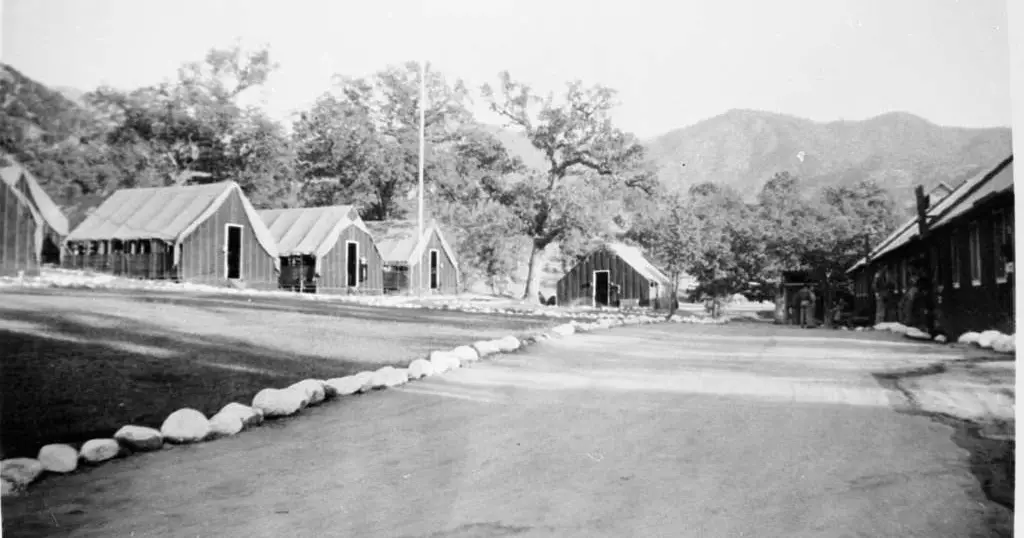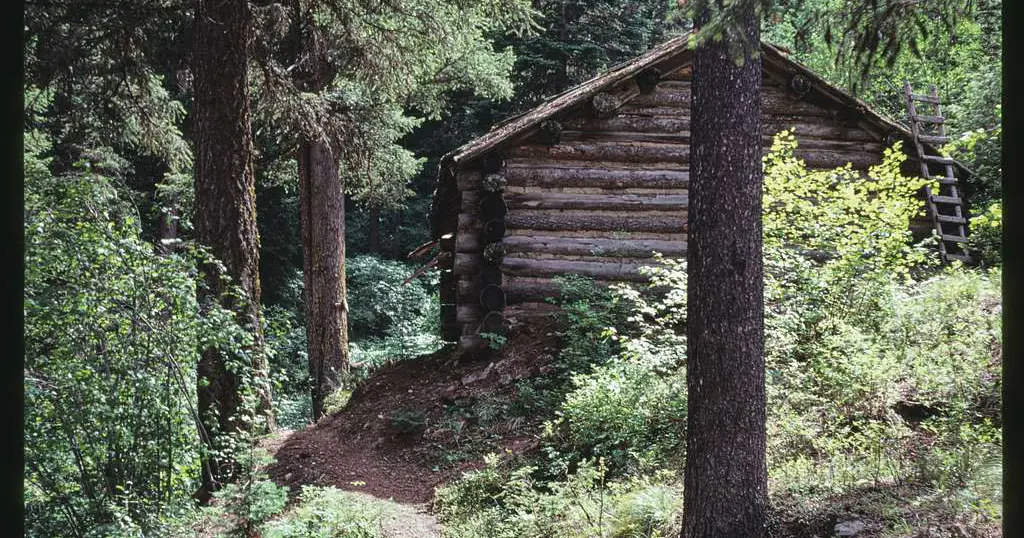Nestled within the verdant expanse of the Prescott National Forest lies a hidden treasure trove of history and culture – the historic cabin architecture. These cabins are not just structures; they are storytellers of the past, each with a unique tale to tell.
From the early settlements to the modern-day, these cabins have stood as silent witnesses to the evolution of architectural design and community development.

In this comprehensive guide, we will delve deep into the world of historic cabin architecture in Prescott National Forest, exploring its origins, evolution, significance, and future.
Historical Context
The historical context of cabin architecture in Prescott National Forest is deeply rooted in the American frontier spirit and the natural landscape of the region. These cabins, initially built in the late 19th and early 20th centuries, symbolize the convergence of diverse cultural influences, from Native American to European settler designs.
They reflect the resourcefulness of the early inhabitants who used locally available materials to construct homes and community structures in response to their environment. The formation of Prescott National Forest further added to this rich tapestry, preserving these architectural relics and the stories they hold.
Understanding this historical backdrop is essential, as it provides insights into how these cabins were not just mere shelters, but integral parts of a broader narrative of survival, adaptation, and community building in the American West.
Early Settlements and Cabin Origins: The Foundation Era
The story of Prescott’s historic cabins begins in the late 19th century. Settlers, drawn by the promise of land and opportunity, started building cabins using the resources available to them.
These initial structures were simple, constructed primarily for utility and shelter. The design and construction methods reflect the early settlers’ struggle and adaptability.
Cultural Influences on Cabin Design: Native American and Settler Contributions
The cabin designs in Prescott National Forest were influenced by both Native American and early settler cultures.
This blend of architectural styles is evident in the cabins’ unique designs, which incorporate elements like native wood and stone, reflecting the area’s natural beauty and cultural heritage.
Prescott National Forest: Its Formation and Significance
Prescott National Forest, established in the early 20th century, played a crucial role in the conservation of these historic cabins.
The forest’s establishment provided a protected environment, allowing these architectural marvels to be preserved for future generations.
Architectural Evolution
The architectural evolution of the cabins in Prescott National Forest is a fascinating journey through time, reflecting changes in design, materials, and function. Initially, these cabins were simple, utilitarian structures, built by early settlers and native inhabitants using locally sourced materials.
As time progressed, the architecture evolved, incorporating more complex designs and diverse building techniques. This evolution mirrors the shifting needs and aesthetic preferences of the inhabitants, from the basic survival requirements of the early settlers to the more comfortable and leisure-oriented designs of the modern era.
Today, while new technologies and materials have been introduced, many cabins still retain elements of their original rustic charm, symbolizing a deep respect for tradition and a continued appreciation for the natural aesthetics of cabin architecture. This blend of the old and the new underscores the dynamic nature of architectural evolution in Prescott National Forest.
The Pioneer Designs: 19th Century Beginnings
The pioneer cabin designs of the 19th century were predominantly simplistic, focusing on basic needs. These cabins were typically one-room structures with minimal ornamentation, reflecting the settlers’ pragmatic approach to life.
As Prescott developed, so did its cabin architecture. The early 20th century saw cabins evolving with more complex designs and improved construction techniques. This period marked a shift from mere survival structures to more comfortable and aesthetically pleasing homes.
Today, while modern architectural styles have emerged, many cabins in Prescott National Forest have retained their historic charm. These structures serve as a testament to the enduring appeal of traditional cabin designs.
Design Elements and Construction
The primary materials used in these cabins – wood and stone – were sourced locally, adding a unique, rustic charm to the structures.
The choice of materials not only provided durability but also blended seamlessly with the surrounding landscape.
Architectural Features and Styles: Identifying Key Characteristics
Prescott’s historic cabins are distinguished by features like large, stone fireplaces, wooden beams, and front porches. These elements not only provided functional benefits but also added an aesthetic appeal to the cabins.
Over the years, construction techniques evolved, leading to stronger, more resilient structures. Innovations in cabin construction have helped preserve these historic buildings, ensuring their longevity.
The Role of Cabins in the Community
The cabins in Prescott National Forest have played a multifaceted role in the community, transcending their primary function as dwellings. Historically, these cabins were the epicenters of family life and community interactions, where stories were passed down, traditions upheld, and a sense of belonging fostered.
In contemporary times, they have evolved to serve as vital links to the past, offering educational insights into the region’s history and the evolution of early American architecture. Moreover, these cabins have become cherished retreats for recreation and tourism, drawing visitors who seek to experience the rustic charm and tranquility they offer.
Their presence enhances the local economy, fosters a sense of pride and identity among residents, and serves as a reminder of the harmonious relationship between nature and human craftsmanship.

The cabins in Prescott National Forest, therefore, represent more than historical artifacts; they are active, living components of the community, contributing to its cultural richness and continuity.
Cabins as Homes: Everyday Life in Historical Context
Initially built as homes for settlers, these cabins were the epicenters of family life. They witnessed everyday activities, from cooking and sleeping to family gatherings, encapsulating the essence of early settler life.
Today, many of these historic cabins serve as recreational retreats for tourists, offering a glimpse into the past and a chance to reconnect with nature. They have become popular destinations for those seeking a break from the hustle and bustle of modern life.
Conservation and Preservation Efforts: Balancing Modern Needs with Historical Integrity
Efforts to conserve and preserve these historic cabins have been ongoing, with organizations and the community working together to maintain these structures.
This balance between modern needs and historical integrity is crucial for the preservation of Prescott’s cabin heritage.
Notable Cabins and Stories
In the heart of Prescott National Forest, the notable cabins stand as living monuments to the area’s rich history and storytelling. Each cabin, with its unique design and structure, whispers tales of the past, from the rugged life of early settlers to the transformative influences of different cultural and historical epochs.
Among these, some cabins have gained prominence, not just for their architectural beauty but for the stories they harbor – tales of families who weathered harsh winters, of community gatherings that strengthened bonds, and of solitary figures who found solace in the forest’s embrace.
These cabins, more than mere structures, are custodians of personal and collective narratives, offering a tangible connection to the diverse tapestry of human experiences that shaped the region.
Iconic Cabins of Prescott: A Tour Through History
Prescott National Forest is home to several iconic cabins, each with its own story. From the humble abodes of early settlers to more elaborate structures, these cabins offer a tangible connection to the past.
The cabins are not just structures; they are repositories of personal stories and anecdotes. Tales of life, love, hardship, and joy echo within their walls, providing a rich tapestry of human experience.
Some cabins in Prescott stand out for their unique architectural features, such as hand-crafted woodwork or native stone masonry. These features not only enhance the beauty of the cabins but also showcase the craftsmanship of their builders.
Preservation and Future
The preservation and future of historic cabin architecture in Prescott National Forest represent a crucial intersection of history and modernity. These structures, emblematic of early American resilience and ingenuity, face challenges from environmental elements and the pressures of modern development.
Yet, there is a growing consciousness about the importance of maintaining these historical treasures. Efforts towards their preservation are not just about safeguarding the past; they are about respecting and learning from the history they embody.
The future of these cabins hinges on the careful balance between embracing modern techniques for conservation and staying true to their original craftsmanship and design, ensuring they remain a testament to the region’s rich heritage for generations to come.
Challenges in Preservation: Environmental and Human Factors
Preserving these historic cabins is not without its challenges. Environmental factors like weathering and the human impact of tourism pose threats to the integrity of these structures. Ongoing maintenance and conservation efforts are essential to address these challenges.
Numerous restoration projects have successfully preserved many of Prescott’s historic cabins. These projects often involve meticulous work to maintain the original character of the cabins while ensuring they are safe and accessible for future generations.

The future of cabin architecture in Prescott looks promising, with a growing appreciation for historic preservation and sustainable design. New cabins are being built with a nod to the traditional styles, ensuring the legacy continues.
FAQs: Historic Cabin Architecture in Prescott National Forest
What Makes Prescott’s Historic Cabins Unique?
Prescott’s historic cabins are unique due to their blend of Native American and settler architectural influences, use of local materials, and their adaptation to the natural landscape.
How Can Visitors Experience These Historic Cabins?
Visitors can experience these cabins through guided tours, stays in renovated cabins, and educational programs highlighting their historical significance.
What Are the Main Challenges in Preserving These Structures?
The main challenges include environmental wear, adapting to modern safety standards, and balancing tourism with preservation.
Are There Opportunities for Public Involvement in Cabin Preservation?
Yes, there are numerous volunteer opportunities and community projects focused on the preservation of these historic structures.
How Does Modern Architecture in Prescott Reflect its Historic Cabin Roots?
Modern architecture in Prescott often incorporates elements of historic cabin design, like the use of natural materials and aesthetic styles, reflecting a deep respect for the region’s architectural heritage.
Conclusion
The historic cabin architecture of Prescott National Forest is a remarkable blend of history, culture, and artistry. These cabins are more than just buildings; they are a testament to the resilience, ingenuity, and spirit of the people who built them.
As we look to the future, it’s crucial that we continue to preserve these structures, not only for their historical value but also for the lessons they teach us about sustainable living and harmony with nature.
The cabins of Prescott are not just relics of the past; they are beacons for the future, guiding us toward a deeper understanding of our heritage and our place within the natural world.



Leave a Comment
You must be logged in to post a comment.